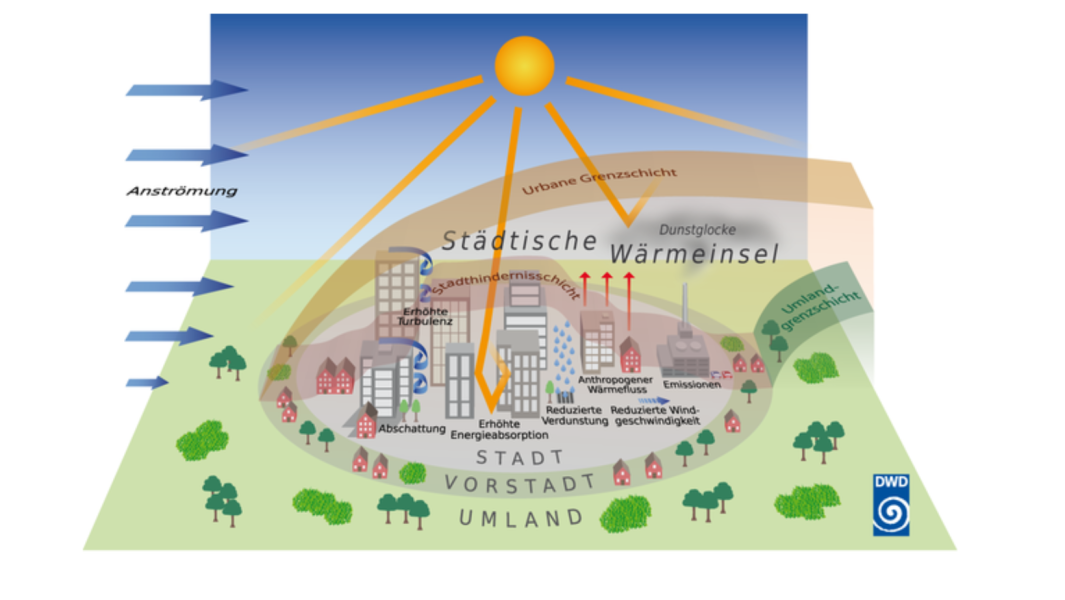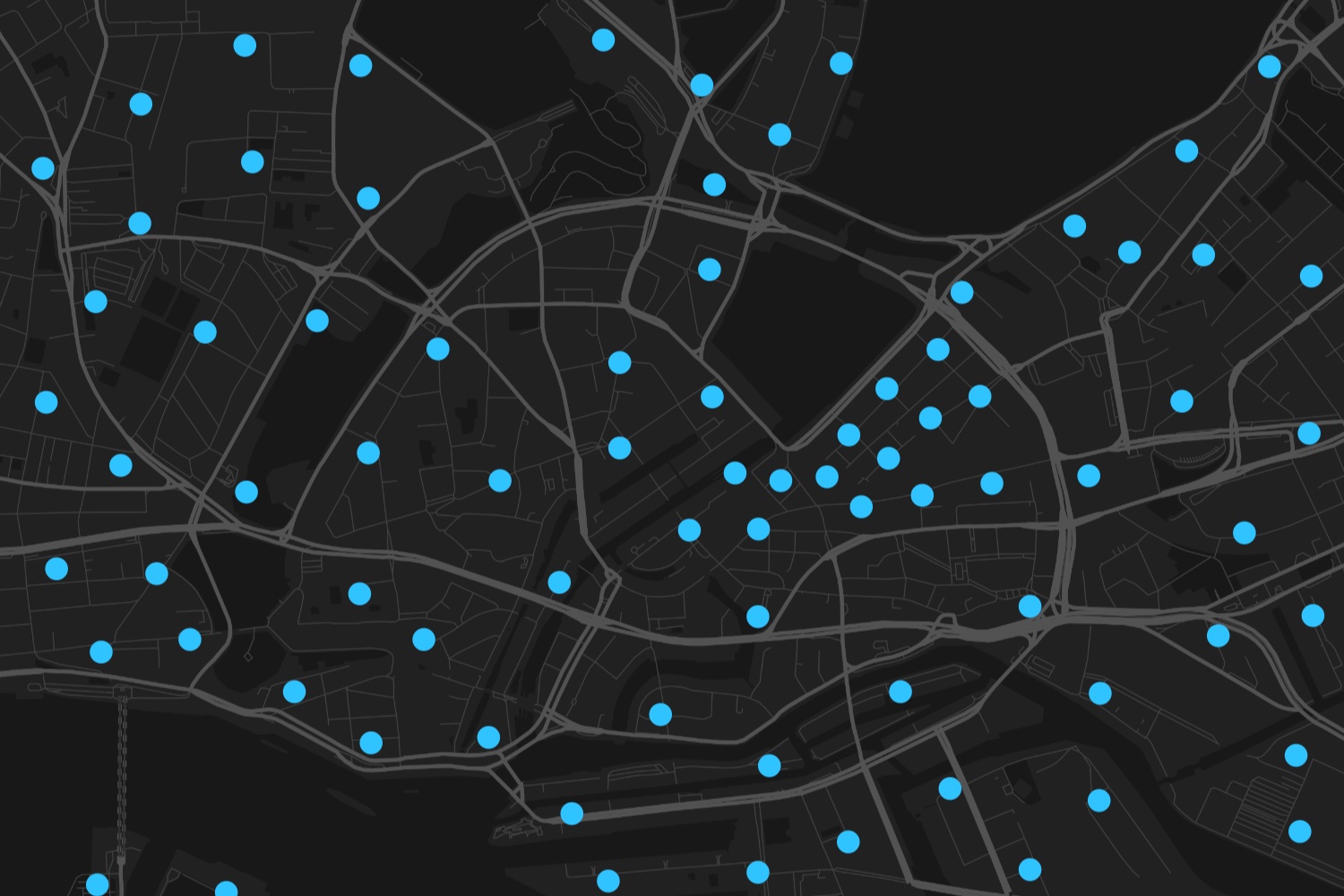Sustainability check: How does monitoring heat islands help?
- Identification of particularly hot and cool locations within the municipality.
- In conjunction with other data, correlations can be made between temperature and factors such as traffic volume, tree cover, ground conditions, building height, etc.
- Provide a data-based foundation for short-term measures such as greening (e.g., facade, roof, and building greening, increasing tree cover and downtown vegetation)
- Information can be incorporated into urban planning in the long term, e.g. for planning fresh air corridors





